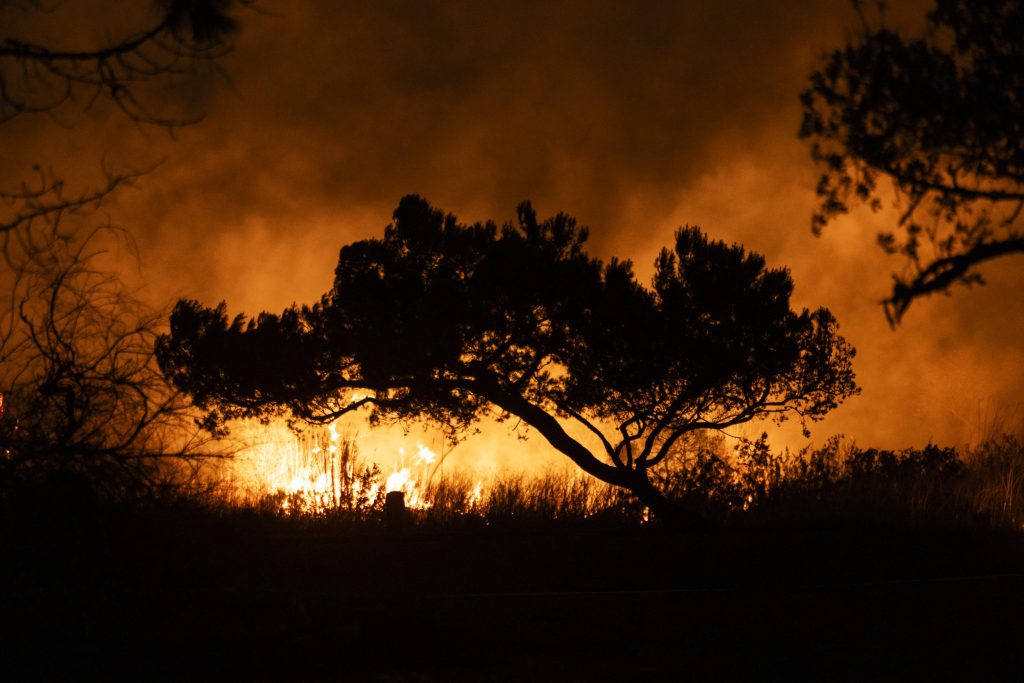The Los Angeles metropolitan area remains shrouded under an Air Quality Alert issued by the National Weather Service (NWS), a consequence of persistent dust and ash emanating from recent wildfires. This alert underscores the ongoing environmental crisis gripping the region, with the South Coast Air Quality Management District (AQMD) reporting elevated pollution levels posing significant health risks. The impacted air quality is particularly dangerous for vulnerable populations, including individuals with pre-existing heart and lung conditions, children, and older adults, who are more susceptible to severe health complications from exposure. The current Air Quality Alert, in effect for the South Coast Air Basin and Coachella Valley, is anticipated to last until this evening. However, the threat of recurring poor air quality persists due to ongoing wildfires and the potential for shifting wind patterns.
The pervasiveness of this hazardous air quality stems primarily from the smoke generated by the Pacific Palisades fire, exacerbated by powerful Santa Ana winds. These winds, gusting up to 100 mph, have dispersed fine particulate matter and other pollutants across vast distances, blanketing the region in a haze of unhealthy air. Adding to the complexity of the situation are the prevailing Red Flag Warnings, indicative of a heightened wildfire risk due to the combination of dry vegetation and persistent Santa Ana winds. This volatile combination creates a feedback loop, where increased fire risk leads to more fires, generating more smoke and further degrading air quality, while simultaneously hindering recovery efforts. The variability of wind patterns contributes to unpredictable pollution levels across different areas, making it challenging to pinpoint specific locations at highest risk.
The health implications of poor air quality are substantial. Smoke from wildfires contains microscopic particles that infiltrate deep into the lungs and even enter the bloodstream, significantly increasing the risk of both respiratory and cardiovascular diseases. Short-term exposure can trigger a range of symptoms, from simple irritation and breathing difficulties to exacerbations of pre-existing conditions like asthma and chronic obstructive pulmonary disease (COPD). The long-term consequences of exposure are even more dire, with links to severe health issues such as heart disease and diminished lung function. These risks are particularly pronounced for vulnerable groups like children, the elderly, and those with pre-existing health conditions. The ongoing fires have already wrought significant destruction, with over 12,000 structures destroyed according to California’s Department of Forestry and Fire Protection, highlighting the widespread impact of these events.
The NWS has issued strong recommendations for residents to mitigate exposure to the hazardous air. Staying indoors, keeping windows closed, and utilizing air purifiers are crucial steps to minimize inhalation of harmful particles. These precautions are particularly important for individuals residing southwest of recently burned areas, who face the greatest risk of ash contamination. While some improvement in air quality has been observed due to diminishing winds and increased fire containment, the threat remains far from over. Forecasters anticipate the return of strong winds in the coming days, escalating the risk of further wildfires and a resurgence of toxic smoke. This reinforces the need for continued vigilance and adherence to safety precautions.
Health officials are urging residents, especially those with underlying health conditions, to remain vigilant and proactive in protecting their health. Limiting physical activity outdoors minimizes exertion and subsequent inhalation of polluted air. Wearing properly fitted respirator masks when venturing outside provides an additional layer of protection against harmful particles. Experts like Rory Hadden, a fire science professor at the University of Edinburgh, emphasize the inherent dangers of wildfire smoke, stating that “All smoke is bad…it’s got some very nasty stuff in it.” This sentiment is echoed by Muntu Davis, Los Angeles County’s health officer, who stresses the importance of awareness and proactive health protection measures, recognizing that “Smoke and ash can harm everyone, even those who are healthy.”
Looking ahead, the current Air Quality Alert is expected to expire this evening, but the potential for similar conditions remains if wildfires continue to burn. The situation requires ongoing monitoring and vigilance. The South Coast AQMD advises residents to utilize resources like their mobile app and consult public health guidelines for safe ash cleanup, emphasizing the importance of informed action. With four fires currently active in California, according to the state’s Department of Forestry and Fire Protection, the fight against these blazes and their subsequent impact on air quality continues. The focus remains on containment and mitigation, striving to improve air quality and protect public health amidst this ongoing environmental challenge.










